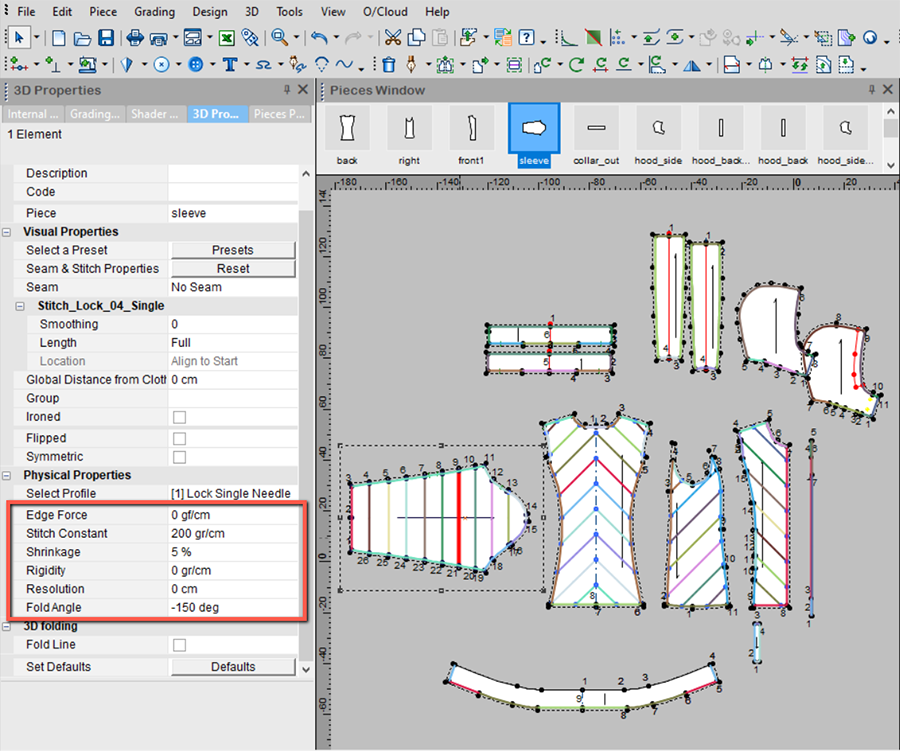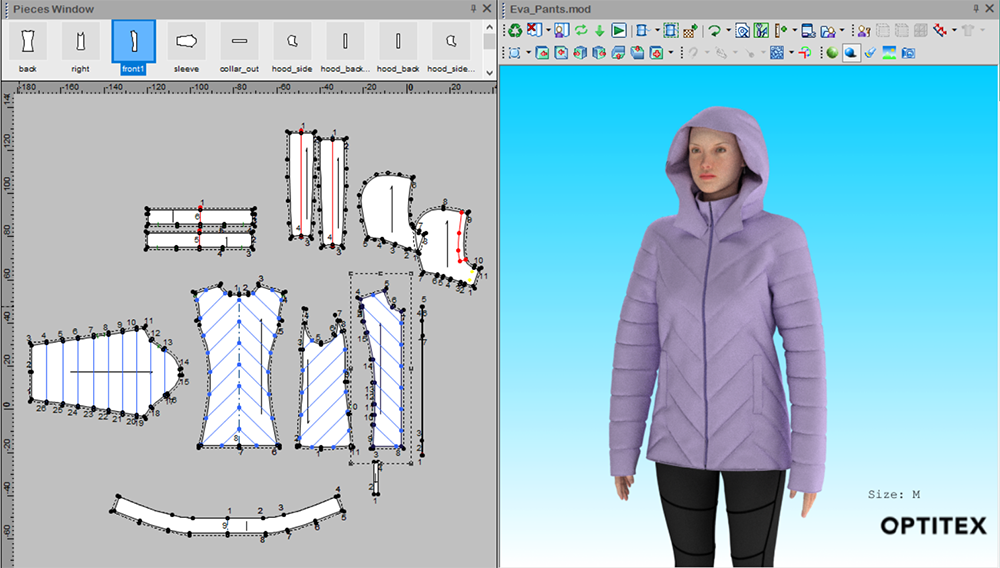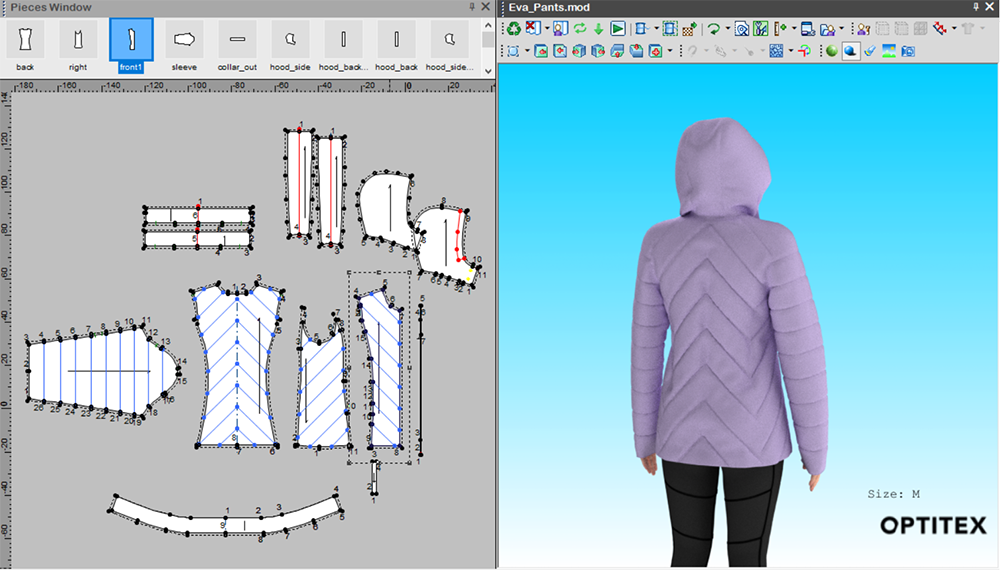Creating a Puffy Garment (O19.6 and up)
The following describes a workflow for puffy jacket creation in PDS.
-
Use single layer for efficiency
-
Create internal stitches throughout your pieces to represent puffiness. These stitches should have a following defined:
-
Stitch constant = 200 gr/cm
-
Shrinkage on stitch ~ 5%.
-
Fold Angle = -170 degrees (in general angle can be between -120 to -170, the lower the number represents deeper stitch)

-
Select one of the Padded's Fabrics from the Fabric List:

-
You can apply a very low pressure to your pieces to represent the filling effect - about 0.0005 psi. If the style doesn't have a lot of volume, pressure can be 0 psi. A bit higher pressure ~ 0.001 psi can be applied to collars and hoods. In the case you need to show an inner layer it should be added as usual lining.
Click here to see how to calculate fill power or filling weight conversion to pressure.


Calculations for filling weight and fill power conversion to pressure:
If you’re buying a down jacket, it will have a fill power rating between 450 and 900. This number tells you how many cubic inches an ounce of that specific down will take up. A higher rating generally means a higher-quality down. But the fill power is not a measurement of overall loft, just how efficiently the down in the jacket puffs up. To see how lofted a down jacket will be, look at the fill weight.
Synthetic loft is measured in straightforward grams. It usually ranges from 50 to 200 grams, with 200 being a big winter parka and 50 being something light enough to wear on a spring run.
Fill weight to PSI conversion:
Frequently puffiness of the jacket piece is defined via amount of down used in it: say 50 gr per back piece. For example, if the size of back piece is 40 cm * 50 cm = 2000 cm^2
Pressure should be: 50 gr / 2000 cm^2 = 0.025 gr/cm^2
Conversion between PSI and gram-force per cm^2:
1 psi = 70.306957964239 g/cm2
Therefore, to convert to PSI we need to divide by 70:
0.025 gr/cm^2 / 70 = 0.00035 PSI
Overall formula is:
PSI settings in a piece = Down gram per pieces / (piece area in cm^2 * 70)
Fill Power to PSI:
In order to compute PSI when you don't know the weight of down or synthetic filling and have fill power instead, you should do the following:
450-900 inch^3 per 1 ounce
When this is converted to cm and grams we get:
260-520 cm^3 per 1 gram
Volume of the filling is square area of the piece(s) times thickness.
For example, if we assume that area of the back is 2000 cm^2 and we want thickness of 2 cm we get volume 2000 x 2 = 4000 cm^3
If our filling is 450 = 260 cm^3 per 1 gram then in 4000 cm^3 we get 15 gram
If our filling is 900 = 520 cm^3 per 1 gram then in 4000 cm^3 we get 30 gram
Using the formula for PSI settings:
PSI settings in a piece = Down gram per pieces / (piece area in cm^2 * 70)
PSI settings in a piece = (piece areain cm^2 x filling thickness) / (filling power) /(piece area in cm^2 * 70)
PSI settings in a piece = (filling thickness in cm) / (filling power in cm * 70)
If filling power is in inch^3 per ounce then we need to multiply it by 0.58
PSI settings in a piece = (filling thickness in cm) / (filling power * 0.58 * 70)
PSI settings in a piece = (filling thickness in cm) / (filling power * 40.5)
Verifying with real numbers:
for 2cm thickness and 450 fill power we get PSI = 0.0001
for 2cm thickness and 900 fill power we get PSI=0.00005